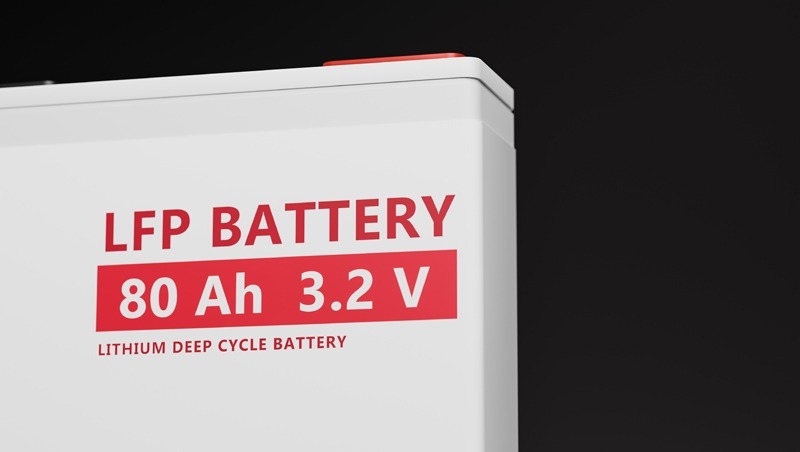One of the most innovative manufacturers of drive batteries worldwide is the Chinese manufacturer Contemporary Amperes Technology Co. Limited (CATL). But the focus is not only on the production of the batteries, but also on strategic solutions for the use of the batteries. In April, CATL opened the first EVOGO battery swapping service in Xiamen, southeast China's Fujian Province. It will be interesting to see whether changing the batteries will be accepted better than the charging stations.
By equipping the basic version of the Tesla Model 3 with batteries, there is already a global order for CATL. The special feature of the current batteries, which have been in use since the end of 2021, is the composition of the cathode material. CATL supplies lithium iron phosphate cells for the manufacturer. They can be recognized by the abbreviation LFP, where the letter F stands for Ferrum (iron).
The advantage of LFP cells is clearly the price-performance ratio in production compared to batteries with NCA chemistry (nickel, cobalt, aluminium) or NCM chemistry (nickel, cobalt, manganese). These cells collect additional plus points when it comes to long-term durability and reducing the risk of fire. With Tesla's entry into the Model 3, the likelihood of it being used by other manufacturers in the mass market is inevitable. A disadvantage of the battery must also be taken into account. In European climes, the batteries can hardly be charged in sub-zero temperatures. Therefore, temperature management of the battery is required to compensate for this disadvantage. The first energy inflows from the charging current are first used to warm up the battery. The actual loading process then takes place. The principle already works with the Tesla Model 3.
The price advantages outweigh
With traditional NMC cells, the strong price increases in metal prices can no longer be offset in the long term by ongoing increases in production efficiency. Volkswagen is also expected to use the low-cost LFP cells in the ID.2025 and ID.1 entry-level models that will be produced from 2. It is also planned to be used in the new EQA and EQB models from Mercedes, which are to be produced from 2024.
Advantages:
- No use of cobalt or nickel.
- Cheaper to produce than NCA/NMC batteries
- Charge and discharge cycles higher than with NMC/NCA batteries
- LFP cells have a reduced risk of fire and explosion in an accident
- LFP batteries can be charged to 100%
(For Li-ion batteries the recommendation is 80%)
Disadvantages:
- More space and heavier than NCA/NMC batteries
- Low energy density comparison (LFP=130-160 Wh/kg , NMC=230-250 Wh/kg , NCA=322 Wh/kg)
- In cold weather, the advantages lie with the NMC batteries. LFP batteries can be warmed up, which also increases the energy consumption of electric cars
- The batteries are unsuitable for use in performance models
| Manufacturers | Models with LFP batteries 2023 |
| BYD Tesla MG | Han/Atto 3/Tang Model 3 / Model Y rear wheel drive ZS EV Standard / MG 4 Standard / MG5 Electric Standard |
An innovative topic is the use of 800 volt high voltage for these batteries. The increase in charging power means significantly shorter charging times and correspondingly more acceptance among customers. High-quality power electronics must be used for this, but these components will also find their way into the mass market in the long term. At the moment there is strong competition from global manufacturers to increase the energy density of LFP batteries. This means that the price advantages will increase again in the coming years.

CATL is already building a production facility in Germany Thuringia launched and started production in January 2023. Series production of lithium-ion cells was started. According to a statement from the group, the installation and commissioning of the lines is in full swing in order to further ramp up production.
The first batch has already rolled off the assembly line from the newly installed production line in Thuringia. The installation and commissioning of the remaining lines is in full swing in order to further ramp up production, according to an official statement from the group dated December 21.12.2022, 8. The capacity for the construction of batteries for electric cars is 14 gigawatt hours (Gwh) per year and is to be increased to XNUMX according to CATL.
Conclusion
The LFP batteries will establish themselves in the mass market in the next few years. The advantages lie in the good durability of the cells, cost-effective production and a wide range of uses in the mass market of electromobility. The Chinese producers are presenting an enormous pace of development, which is met with great interest in the global automotive industry.
Addendum
Cover image: Copyright ZETHA_WORK @ AdobeStock.com
- The Nissan Townstar EV Tekna can be used flexibly - April 19, 2024
- Preview of the Pikes Peak International Hill Climb (PPIHC) 2024 - April 19, 2024
- LFP batteries conquer the world market - April 19, 2024
